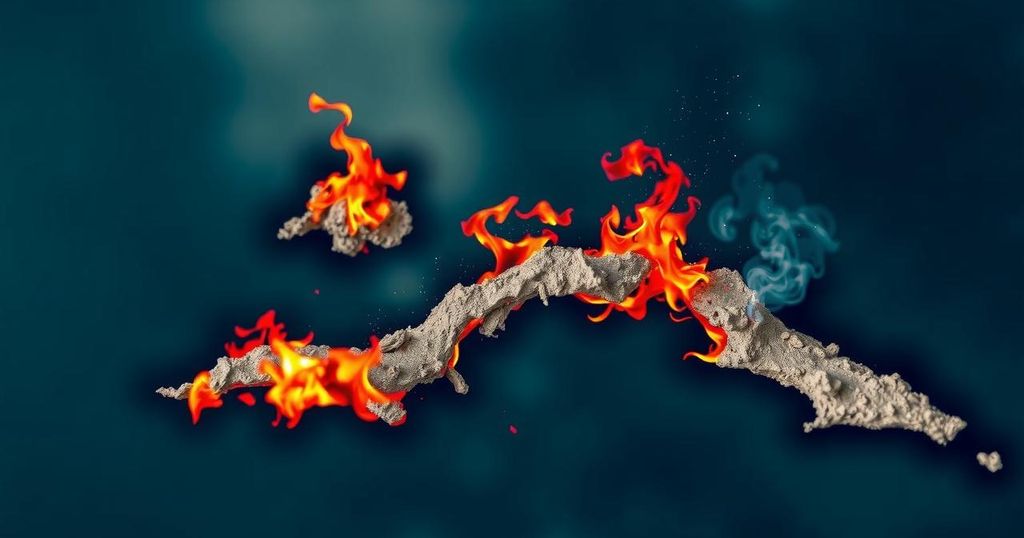Cuba is facing a multifaceted crisis characterized by ongoing power outages, economic stagnation, and mass emigration driven by deteriorating living conditions. Recent blackouts, fueled by an aging energy infrastructure reliant on fossil fuels and constrained by a tightening U.S. embargo, have further aggravated public discontent. Economic challenges include soaring inflation and shortages of basic goods, leading to widespread protests and significant emigration from the island.
Cuba is currently facing a multitude of crises, most notably a severe energy crisis exacerbated by a fragile power generation system, economic stagnation, and the ongoing effects of U.S. sanctions. Recently, the country experienced a nationwide blackout caused by the collapse of its power grid, which has been struggling under the weight of decades of neglect and insufficient investment. The blackouts have persisted for weeks, leaving some provinces without power for up to 20 hours per day. The economic situation is dire, with non-essential public services grounded, schools closed, and traffic signals inoperable in Havana. The power infrastructure is predominantly reliant on fossil fuels, generating only one-third of the required electricity. Cuba’s primary power sources are aging coal-fired plants, some over 40 years old and prone to frequent breakdowns. To mitigate the crisis, the government has leased floating power plants from Turkey and implemented small diesel generators, but these measures have proven inadequate. Furthermore, the U.S. trade embargo, tightened under the Trump administration, continues to hamper fuel purchases from abroad, particularly as oil deliveries from Venezuela have decreased. Economic strife pervades the island as well, marked by a soaring inflation rate and widespread shortages of basic necessities, including food, medicine, and fuel. While the government attributes these issues in part to the U.S. embargo, the after-effects of the COVID-19 pandemic and poor economic governance have intensified the crisis. In July 2021, frustration with blackouts and the rising costs of living led to significant protests across Cuba, where demonstrators voiced their desperation by chanting slogans like, “We are hungry” and “Freedom!” Since then, protests have continued sporadically, and government responses have included the arrest of demonstrators and a controversial decision to allow some forms of private enterprise as a means to alleviate the economic crisis. Yet, many citizens, disillusioned by the bleak situation, are fleeing the country. Reports indicate that emigration from Cuba is at unprecedented levels, with over 700,000 people seeking refuge in the United States from January 2022 to August 2024. Cuba’s population is projected to drop below 10 million by 2024, marking a significant demographic shift since the revolution of 1959. The integration of these pressing crises—the energy system’s collapse, economic hardship, civil unrest, and a surge in emigration—paints a dire picture of the nation that is struggling to recover from years of systemic challenges and external pressures.
Cuba’s crises stem from a confluence of long-standing issues, including the embargo imposed by the United States since 1962, a lack of investment in critical infrastructure, and the heavy dependence on a failing power generation system. This has led to an energy crisis characterized by frequent blackouts, aging power plants, and insufficient energy resources to meet demand. In addition, the economic landscape is marred by hyperinflation, shortages of essential goods due to disrupted supply chains, and the long-term effects of mismanagement within the country’s economy, exacerbated by recent global events such as the COVID-19 pandemic. Protests have surfaced as citizens grapple with these difficulties, and growing numbers have opted to emigrate in search of better opportunities.
In summary, Cuba is entrenched in a significant crisis marked by energy shortages, economic decline, and a growing wave of emigration. The convergence of an aging energy infrastructure, inflation, and civil unrest has driven many citizens to protest, while others seek to escape the deteriorating conditions through emigration. As the country navigates these challenges, prospects for recovery remain uncertain. Notably, the interplay between external pressures, such as the U.S. embargo and volatile relationships with allies, continues to dominate discussions regarding Cuba’s future.
Original Source: jordantimes.com






